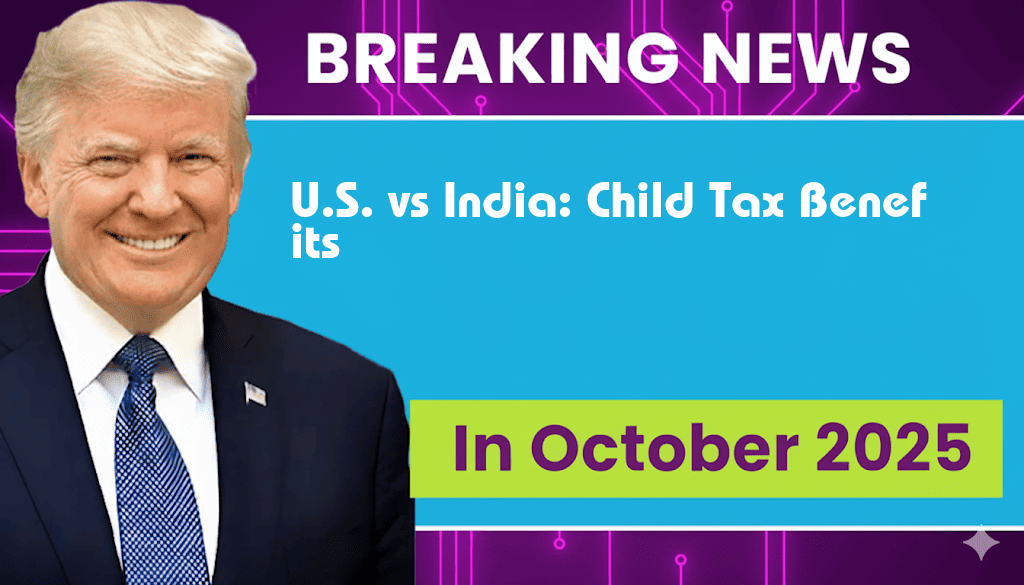The global landscape of child support varies significantly, with the United States and India presenting contrasting approaches to financial assistance for families. In the U.S., the Child Tax Credit (CTC) offers a maximum benefit of $2,200 per eligible child for the tax year 2023, aimed at reducing the financial burden on American families. Meanwhile, in India, the government has introduced various child benefit schemes that can cumulatively provide families with up to ₹1,65,000 annually, translating to approximately $2,000. This article explores the differences, eligibility criteria, and impacts of these two child support systems, highlighting how each country addresses the economic needs of families with children.
Understanding the Child Tax Credit in the U.S.
The Child Tax Credit in the United States has undergone significant changes in recent years, particularly with the introduction of the American Rescue Plan in 2021. For the tax year 2023, families can receive a credit of up to $2,200 for each qualifying child under the age of 17. This credit is designed to help alleviate the costs associated with raising children, covering expenses such as education, healthcare, and daily living.
Eligibility and Benefits
- Eligibility: The credit is available to families with an adjusted gross income (AGI) below certain thresholds: $200,000 for single filers and $400,000 for married couples filing jointly.
- Refundability: The CTC is partially refundable, meaning families can receive a refund even if they owe no federal income tax.
- Impact: The CTC has been credited with lifting millions of children above the poverty line and providing essential support during economic downturns.
Child Benefits in India
In India, the government offers a variety of child benefit programs aimed at supporting families and promoting child welfare. The cumulative benefits can amount to ₹1,65,000 (approximately $2,000) annually, which includes various schemes such as the Pradhan Mantri Matru Vandana Yojana (PMMVY) and the Integrated Child Development Services (ICDS).
Key Schemes and Their Impact
- Pradhan Mantri Matru Vandana Yojana: This scheme provides financial assistance of ₹5,000 to pregnant and lactating women for the first living child, aimed at improving maternal and child health.
- Integrated Child Development Services: The ICDS program offers nutrition, health education, and preschool education, which indirectly contributes to family savings and child development.
- Impact: These initiatives are designed to address malnutrition and improve the overall well-being of children, particularly in lower-income families.
Comparative Analysis
| Aspect | United States | India |
|---|---|---|
| Maximum Benefit | $2,200 per child | Up to ₹1,65,000 annually |
| Eligibility Income Threshold | $200,000 (single) / $400,000 (married) | Variable; often targeted at lower-income families |
| Refundable Credit | Partially refundable | Non-refundable benefits |
| Primary Focus | Tax relief and poverty reduction | Maternal health and child nutrition |
Conclusion
The contrasting child benefit systems in the U.S. and India reflect differing governmental priorities and economic contexts. While the U.S. Child Tax Credit aims to offer direct financial relief to families, India’s approach focuses on broader welfare schemes that address health and nutrition. As each country continues to evolve its policies, the effectiveness of these programs will be crucial in determining their impact on child well-being and family stability.
For further reading on these topics, you can visit the Forbes Child Tax Credit Guide or the Wikipedia page on Child Benefits.
Frequently Asked Questions
What is the amount of the Child Tax Credit in the U.S.?
The Child Tax Credit in the U.S. is currently set at $2,200 per eligible child.
How much financial benefit do families receive in India?
In India, families can receive benefits totaling ₹1,65,000 for their children, depending on various factors.
What are the eligibility requirements for the Child Tax Credit in the U.S.?
To qualify for the Child Tax Credit in the U.S., families must meet specific income thresholds and have qualifying children under the age of 17.
Are there similar child welfare programs in India?
Yes, India offers various child welfare programs that provide financial assistance and benefits, including the ₹1,65,000 benefits for eligible families.
How does the Child Tax Credit in the U.S. compare to benefits in India?
The Child Tax Credit in the U.S. and the benefits in India both aim to support families, but they differ significantly in amount, eligibility, and overall impact.

Leave a Reply